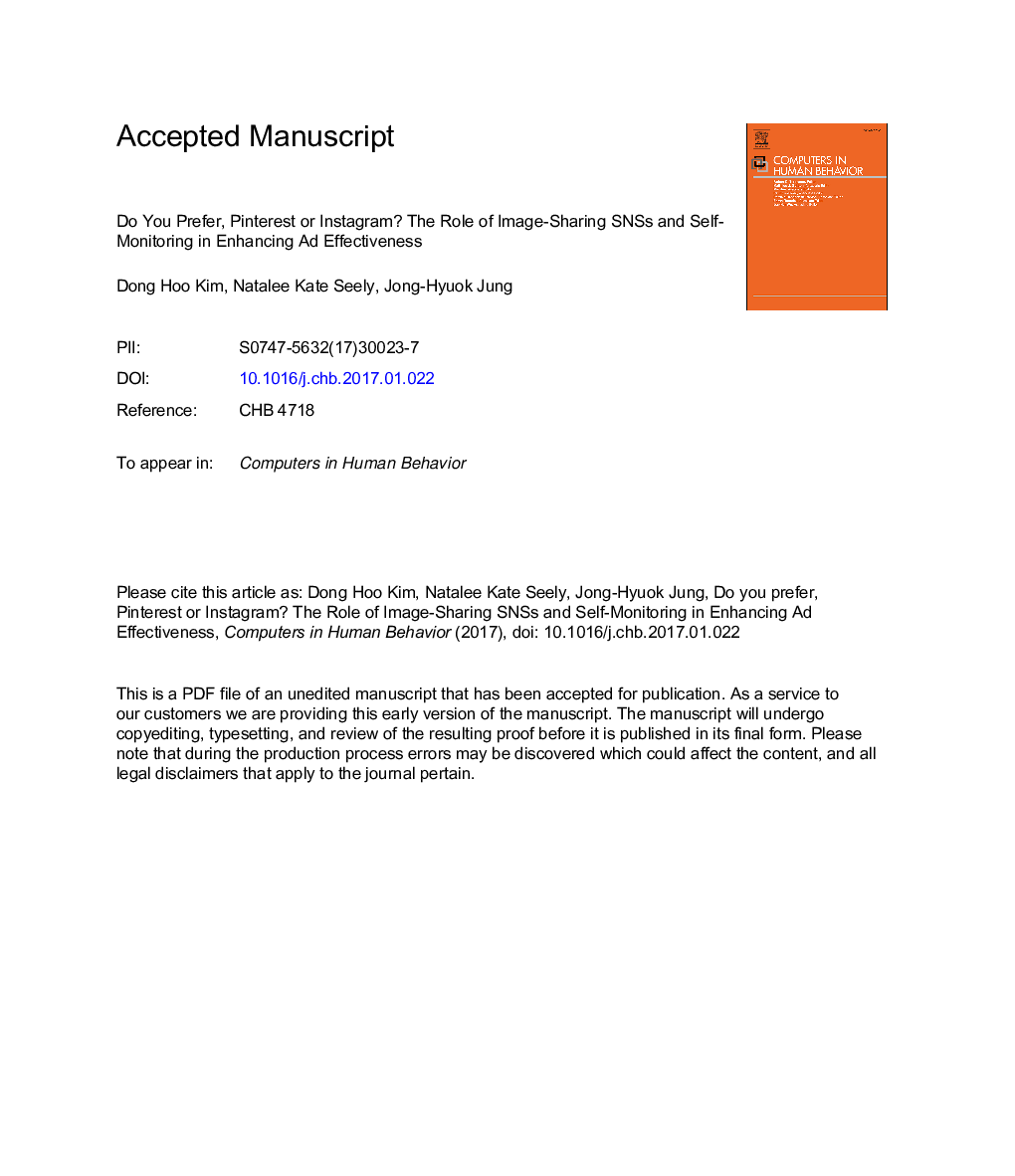| Article ID | Journal | Published Year | Pages | File Type |
|---|---|---|---|---|
| 4937325 | Computers in Human Behavior | 2017 | 34 Pages |
Abstract
The current research applied self-monitoring theory to investigate how individuals' dispositional self-monitoring levels differ when exposed to two image-sharing social network sites (SNSs)-Pinterest and Instagram. Two consecutive studies were conducted. Through an online survey of 153 U.S. college students (study 1) the relationship between individuals' dispositional self-monitoring and their preference of image-sharing SNSs was investigated. And a lab experiment (study 2) involving a subset of the first sample (n = 61) was conducted to explore the impact of the image-sharing SNSs use on individuals' self-monitoring and determine advertisement message efficacy based on exposure to image-sharing social media. Results suggest that students in the low self-monitoring group interacted more intensely with Pinterest than Instagram. Additionally, individuals' interactions with Pinterest and Instagram influenced their dispostional self-monitoring levels, as well as their preferences toward different types of persuasive messages (image-oriented vs. product-oriented advertisement). Results indicate not only that self-monitoring can shift in the context of different image-based social media behaviors, but that self-monitoring as influenced by social media can have implications for advertising message efficacy.
Related Topics
Physical Sciences and Engineering
Computer Science
Computer Science Applications
Authors
Dong Hoo Kim, Natalee Kate Seely, Jong-Hyuok Jung,
